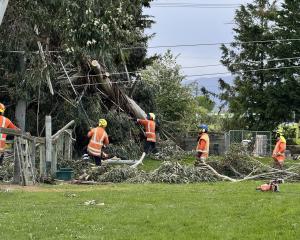One minister has described the costs of the likely strengthening work required on many old Dunedin churches, coming on top of hikes in insurance costs for churches as a "double nightmare".
Under its new earthquake-prone building policy, the Dunedin City Council has sent letters to owners requiring the strength of all pre-1976 non-residential buildings in the city to be assessed within two years.
If buildings were below strength, owners would be given between 15 and 30 years to have the buildings brought up to a required standard.
If buildings are found to have a seismic strength below 34% of current building code and are considered earthquake-prone, owners will be issued a notice by council requiring the building strength be brought up to code requirements.
That work is widely expected to be prohibitive for parishes, which, particularly in the south, own dozens of historic buildings constructed from materials, including stone, considered to be particularly at risk from earthquakes.
The Anglican Diocese of Otago and Southland and the Presbyterian Synod of Otago and Southland said parishes in their areas would be contacted in the next few months and asked to get assessments done on their buildings.
Dunedin Catholic Diocese general manager Stuart Young said a structural engineer was already assessing the big Catholic churches of the diocese, including St Joseph's Cathedral, St Patrick's Basilica, St Bernadette's (Dunedin), Holy Cross College (Mosgiel), St Patrick's Basilica (Oamaru), The Irish Martyrs (Cromwell) and St Mary's (Invercargill). Others would be done by 2014.
The diocese expected to receive the completed reports for the major churches by the end of the year.
Superintendent Presbyter of the Dunedin parish of the Methodist Church Rev Siosifa Pole said the Methodist Church of New Zealand was organising assessments of Methodist churches in Dunedin.
It had already issued a notice to parishes instructing them that any building found to be at risk from an earthquake was to be vacated and not used until it was confirmed safe, or strengthened to 67% of current building code.
The Rev Selwyn Yeoman, of the Presbyterian Coastal Unity parish in Caversham, said churches were struggling not only with hikes in insurance, but other bills for maintenance and the like on buildings that were often more than 100 years old.
His parish of 230 people was already facing a $500,000 bill for maintenance and waterproofing on the grade-1 listed historic Caversham Presbyterian Church, even before it had the church assessed for structural strength.
Any costs for strengthening would be on top of that.
"The nightmare becomes a double nightmare."
The parish was actively trying to work out its options, but all, even the most traditionalist parishioners, had already agreed they must not rule out anything, including sale or demolition.
They had already discussed how they might reuse the important elements of the building, for example, the stained glass windows.












